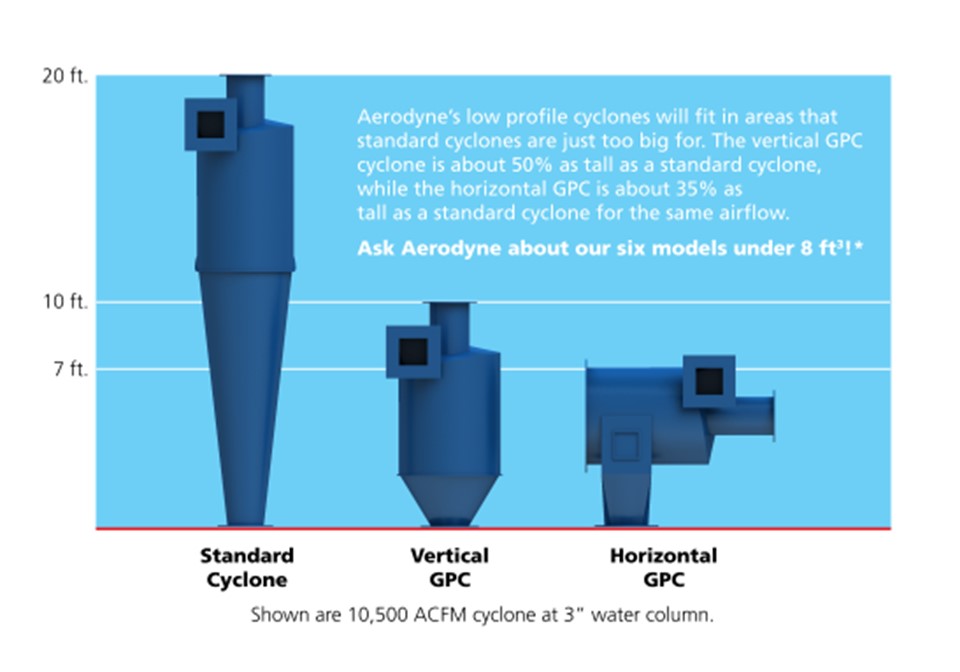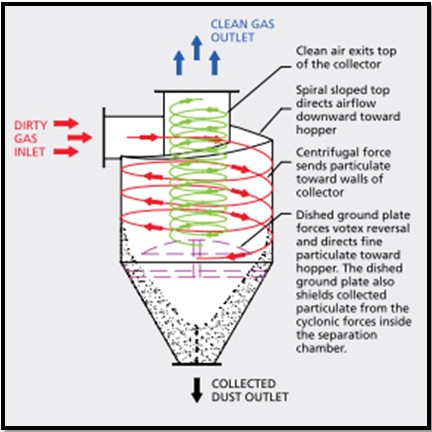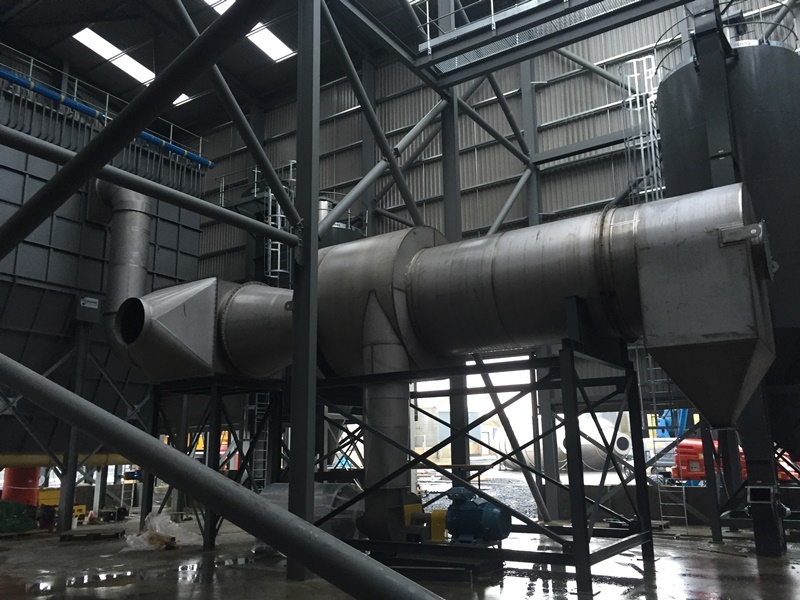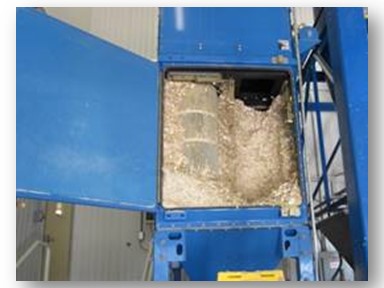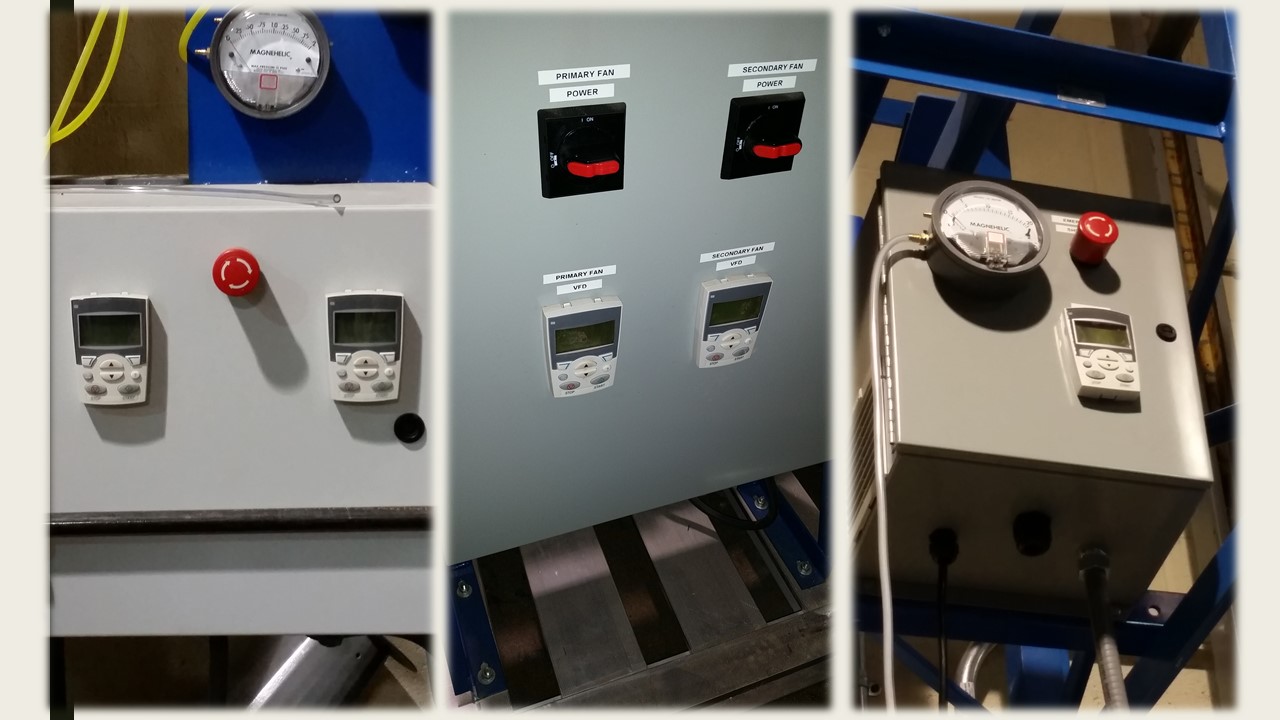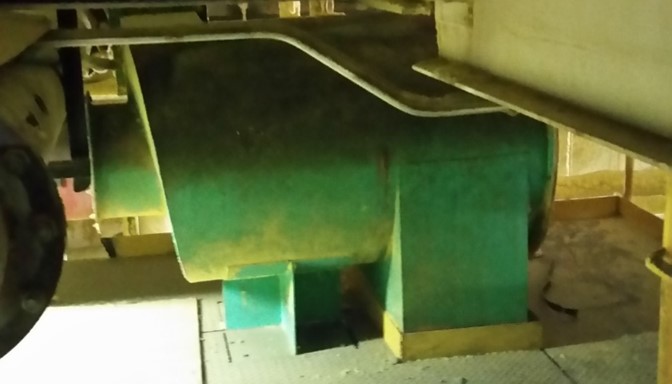Designing a ventilation system always involves considering space constraints. Ductwork, which is essential for air distribution, occupies space within the facility, and its design must efficiently use the available area while ensuring optimal airflow.
Furthermore, complying with NFPA regulations often requires placing dust collectors outside the primary working area due to safety concerns. This external placement adds an extra layer of space management complexity. Additionally, dust collectors are typically mounted on structural supports known as skids, which simplify installation and relocation but also consume additional space within the facility. Therefore, creating an effective ventilation system design requires careful consideration of how these elements harmonize within the given space while meeting safety and efficiency requirements.
Aerodyne's GPC cyclone offers a practical solution for applications where space is a premium concern. Its compact design and efficient performance allow it to seamlessly replace bulkier equipment, making it a space-saving choice for a wide range of industries. By doing so, it not only maximizes available workspace but also simplifies maintenance and enhances operational efficiency. This versatility makes the GPC cyclone a valuable asset, offering a viable and efficient alternative to traditional, space-consuming equipment in various applications.
Aerodyne GPC Cyclone
The GPC cyclone's compact design offers remarkable space-saving advantages, as it can be accommodated in areas that are only half to a third of the size required for traditional cyclones, as shown in the attached documentation. This compactness often permits indoor placement, aligning with NFPA-654 7.13.1.1.2 (2) regulations. Various industries, including those operating clean rooms, mines, vehicles, and portable systems, can capitalize on these space-efficient attributes.
Furthermore, the GPC cyclone's design introduces the opportunity for installation in smaller spaces, potentially replacing the need for extensive ductwork, including 90° elbows. Additionally, it can serve as an effective pre-filter for existing cartridge collectors, baghouses, and electrostatic precipitators. This adaptability opens doors to innovative system configurations, such as positioning it above a conveyor belt to recapture particulate matter and reintroduce it onto the conveyor, showcasing the versatility and space-saving capabilities of the GPC cyclone.
The GPC cyclone by Aerodyne provides an added advantage by eliminating the need for an equipment skid. Many companies accustomed to traditional cyclones may hesitate to incorporate a pre-filter or cyclone dust collector into their skid or unit due to space constraints. However, GPC cyclones can be conveniently mounted on various equipment, such as on top of a dryer, behind a crusher, or at the inlet of a cartridge collector, without requiring a skid. This flexibility simplifies installation and ensures that space considerations do not impede the adoption of efficient dust collection solutions.
Moreover, the adaptability of GPC cyclones extends to marine applications, where space efficiency is paramount. Unlike traditional cyclones that demand multiple levels of a vessel's decks, a GPC cyclone can be installed on a single deck, greatly enhancing the practicality, serviceability, functionality, and feasibility of incorporating cyclone-based dust collection systems on ocean or lake vessels. This versatility underscores the GPC cyclone's ability to provide effective dust collection solutions without imposing significant space-related limitations.
With these savings in space, facilities can operate more efficiently and avoid floor space issues. For more information on the GPC, click on the link below or contact Aerodyne at dc@dustcollectorhq.com or by phone at (440) 543-7400.
To improve efficiency and safety, there is no substitute for an on-site inspection by an experienced expert. Click below to start with a free 20-minute phone consultation by clicking the button.

